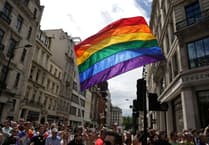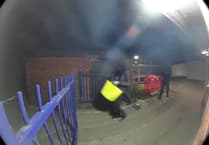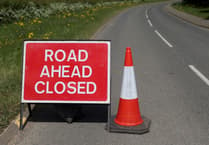Thousands of residents in East Hampshire identify as LGBTQA+, new census figures reveal for first time.
The Office for National Statistics introduced voluntary questions for people aged 16 and over on sexual orientation and gender identity in the 2021 census.
Stonewall described the publication of the figures as a “historic step forward” after more than two centuries of LGBT+ lives being “missing from the national record”.
The ONS data shows 2,333 people in East Hampshire identified as a sexual orientation other than heterosexual when the census was carried out in March 2021 – 2.2% of respondents.
The most common LGBTQA+ sexualities were gay or lesbian (49.2% of those who did not identify as straight) and bisexual (41.1%).
The vast majority of residents said they were heterosexual (91.4%).
A further 6,600 people in East Hampshire did not answer the question.
Across England and Wales, about 1.5 million people identified with an LGBTQA+ sexual orientation in the 2021 census – 3.2% of those aged 16 and over.
Overall, 1.5% described themselves as gay or lesbian, 1.3% described themselves as bisexual and 0.3% selected “other sexual orientation”.
ONS director Jen Woolford said the first census estimates were “crucial”, adding: “They will ensure decision-makers have the best information so they can better understand the extent and nature of disadvantage which people may be experiencing in terms of educational outcomes, health, employment and housing.”
The census also asked people aged 16 and over about gender identity, with 328 (0.3%) East Hampshire residents stating they did not identify with the gender assigned to them at birth.
Of them, 59 people were trans men and 74 were trans women. A further 67 said they were non-binary.
About 4,800 people did not answer the voluntary question.
Nationally, 262,000 people said their gender identity was different from their sex registered at birth – representing 0.5% of the population aged 16 and over.
“Today is a historic step forward after decades of Stonewall campaigning to record sexual orientation and gender identity in the census, finally painting an accurate picture of the diverse ‘Rainbow Britain’ that we now live in, where more and more of us are proud to be who we are.”
The LGBT Foundation said the data is a “huge first step in making LGBTQA+ people feel included” but added it will be years before the figures provide an accurate picture.
The charity said: “The historic and ongoing attitudes towards LGBTQA+ communities, particularly trans and non-binary people, will stop many from feeling safe to provide this information.
“Meanwhile, many LGBTQ+ people are living within households and environments where they are unable to be open about their gender identity, sexual orientation and trans identity."




